I rarely ever plan to make stock. It often comes about as a sudden project inspired by a fridge clean out that revealed limp stalks of celery, an overabundance of onions from my CSA or the bony remains of a turkey feast. Not able to let such ingredients go to the trash, I end up in a 3-hour project to make my own stock. But then I'm pleased I did because in the end I've got a month's supply of liquid gold for use in soups, stews, sauces, and braises. I even use it to flavor grains.
So, I charge you with taking a good look in your fridge and committing to making a big pot of stock. Thank me months from now when you defrost a container of your own, saving $4 on a store-bought box of preservative-rich flavored water.
What you need:
Cool fresh tasting water. Stock is mostly water. Need I say more? It's important to start simmering your stock with cold water, since it brings out the flavor of the vegetables and other ingredients best.
Mirepoix, aka onions, carrots, celery - After water, these are really the only required ingredients to make stock. Make sure that the vegetables are washed, peeled* and trimmed. The state of these vegetables matters not, since you will just be extracting their flavor, not consuming the solids. If they're a little wilted, bring it on. Past their prime? All the more reason to include in your stock. Just cut off and discard any really gross (i.e. rotting) parts.
Other vegetables and scraps (optional). You can include lots of other vegetables in stock. Some that work well for me consistently are turnips, celery root, leeks, squash, cabbage cores, mushrooms, and corn. And like most of my cooking, I use whatever I have on hand. Avoid greens, like spinach, and cabbage leaves, because they will make slimy stock.
Herb stems (recommended) - Use the stems ONLY of herbs like parsley, cilantro, thyme, rosemary, etc. to impart more flavor into the broth. Consider how the stock might be used later to determine which herb stems to use. For a stock going into a Thai soup or curry, I might include cilantro stems over rosemary, and use thyme for stock to make turkey gravy and vegetable pot pie. Do not use the herb leaves for the same reason you should avoid leafy green vegetables.
* Note about vegetable peels and scraps: There are various camps about stock out there and many that like to make it from the ends, peels, scraps and pieces of vegetables that otherwise get thrown away. I think that is fine, but warn you to make sure they are super clean since the dirt can make your stock cloudy and gritty. I'm all about reducing waste, but warn you to exercise caution in this department.
Bouquet Garnis (recommended) - Place herb stems, bay leaf, peppercorns, and other whole spices of your choice, like coriander seeds, into a piece of cheesecloth and tie up with string. Or, as I prefer (and usually don't have string handy), use a narrow strip of the cheesecloth to tie it up. In cooking school, they insisted we use the cheesecloth, so that you can remove the aromatics before they steep too long in the liquid, but I have tossed all of that stuff into the pot without wrapping it up first and it has worked out just fine. It gets strained out in the end anyway.
Bones (optional) - You can make bone broth out of any animal bones, with the most common being turkey, chicken, fish, lamb, pork, and beef. Even though the bones will be strained from the final stock and meat might not appear in a final dish using this stock, consider how you will use bone broth and if you serve any vegetarians who won't eat a final dish cooked with broth made from animal bones. You can use bones that are raw or have already been cooked.
Vinegar (recommended if making bone broth) - Add a couple of tablespoons of vinegar while it is simmering because it helps to extract the calcium, other nutrients and flavor from the bones. If you're making bone broth, don't omit this crucial ingredient. I choose apple cider vinegar, but sherry, balsamic and white wine vinegar also work well.
Equipment needed:
Large pot
Another large pot, bowl or pitcher for straining finished stock into
Fine mesh strainer or chinois** Note about the solids: I have yet to find a good use, other than compost, for the vegetables strained out of the stock. The flavors have essentially been drawn out and the texture destroyed for anything worth eating, but if you have a good use, please let me know in the comments.
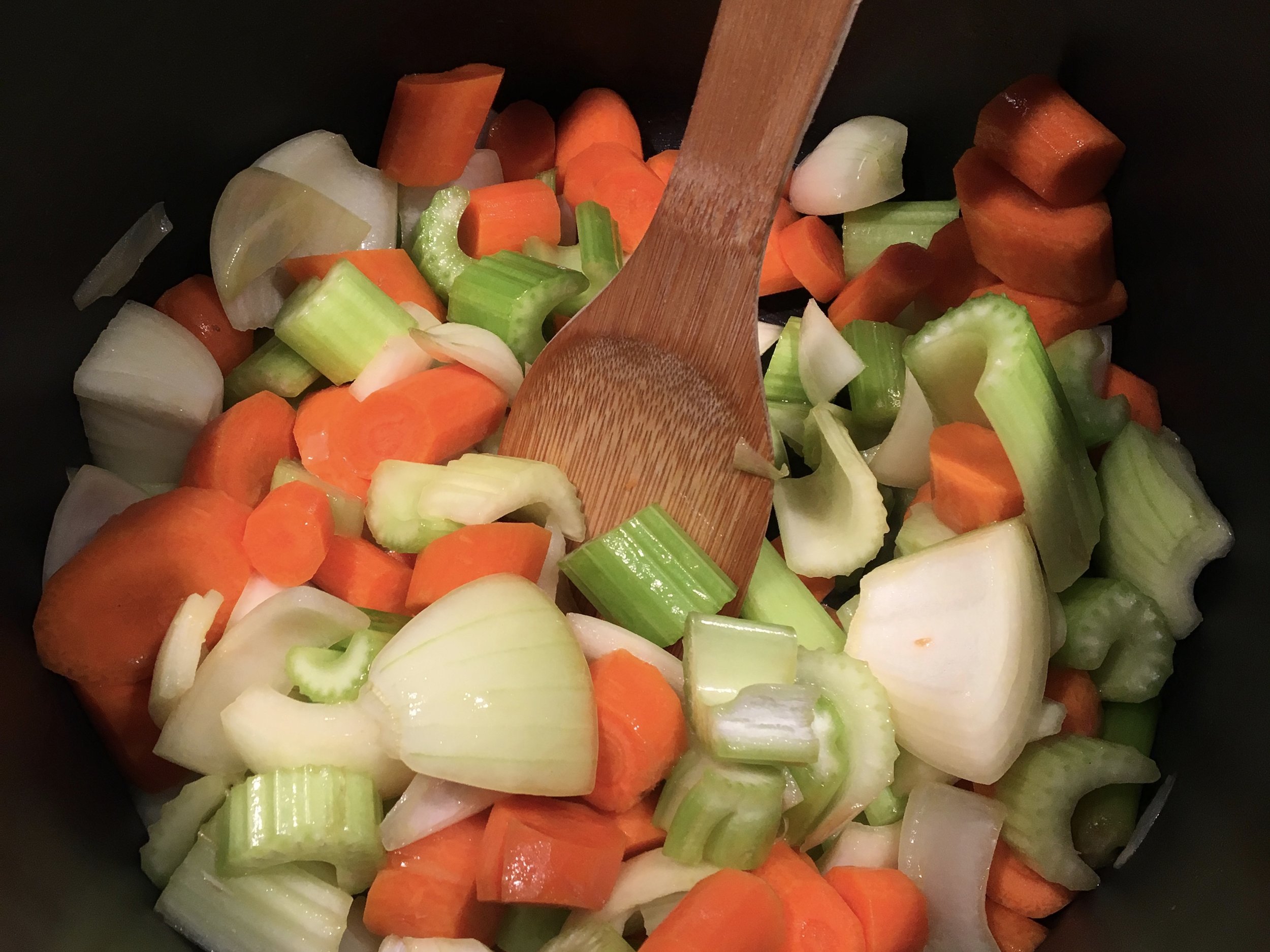

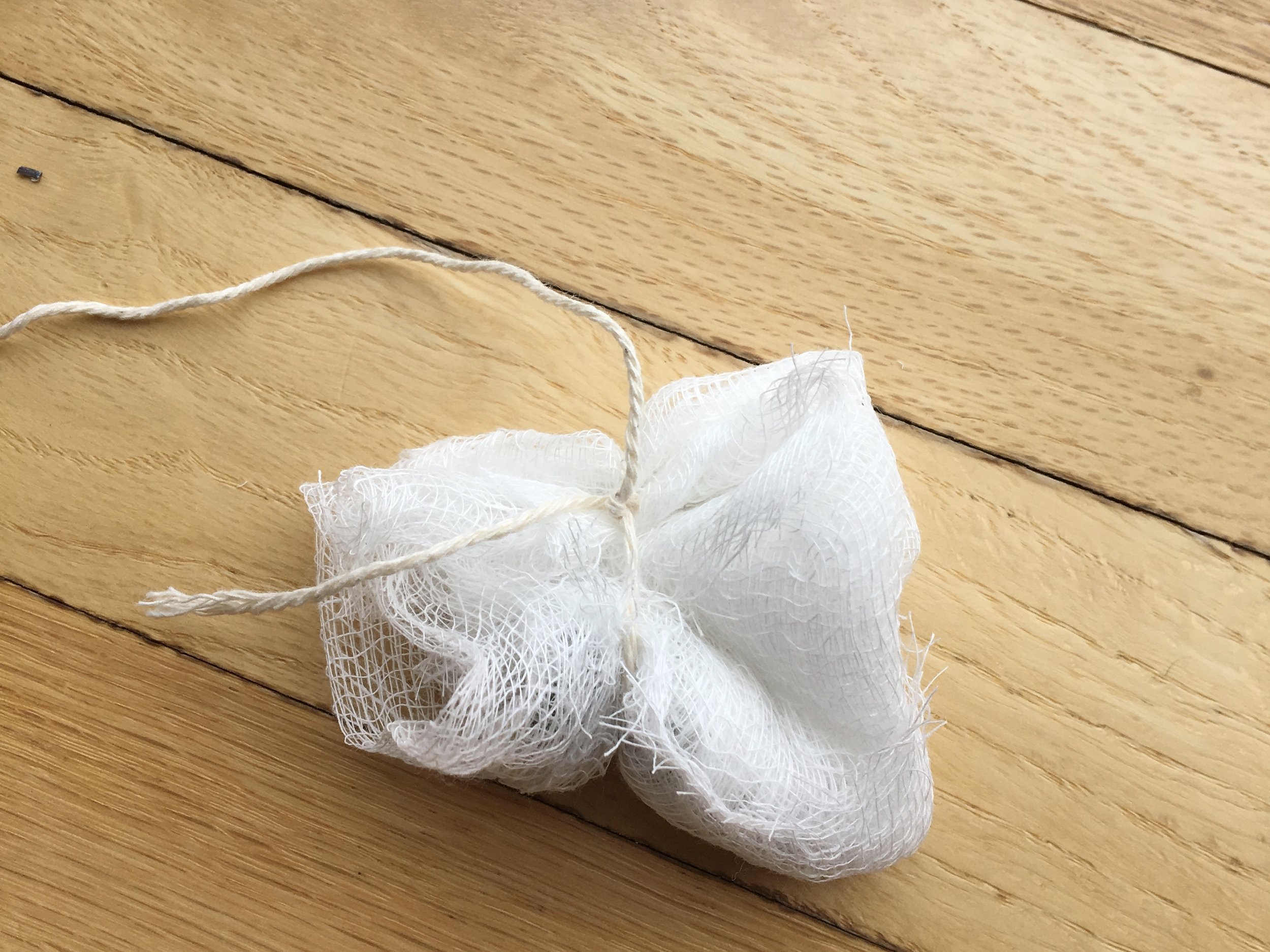
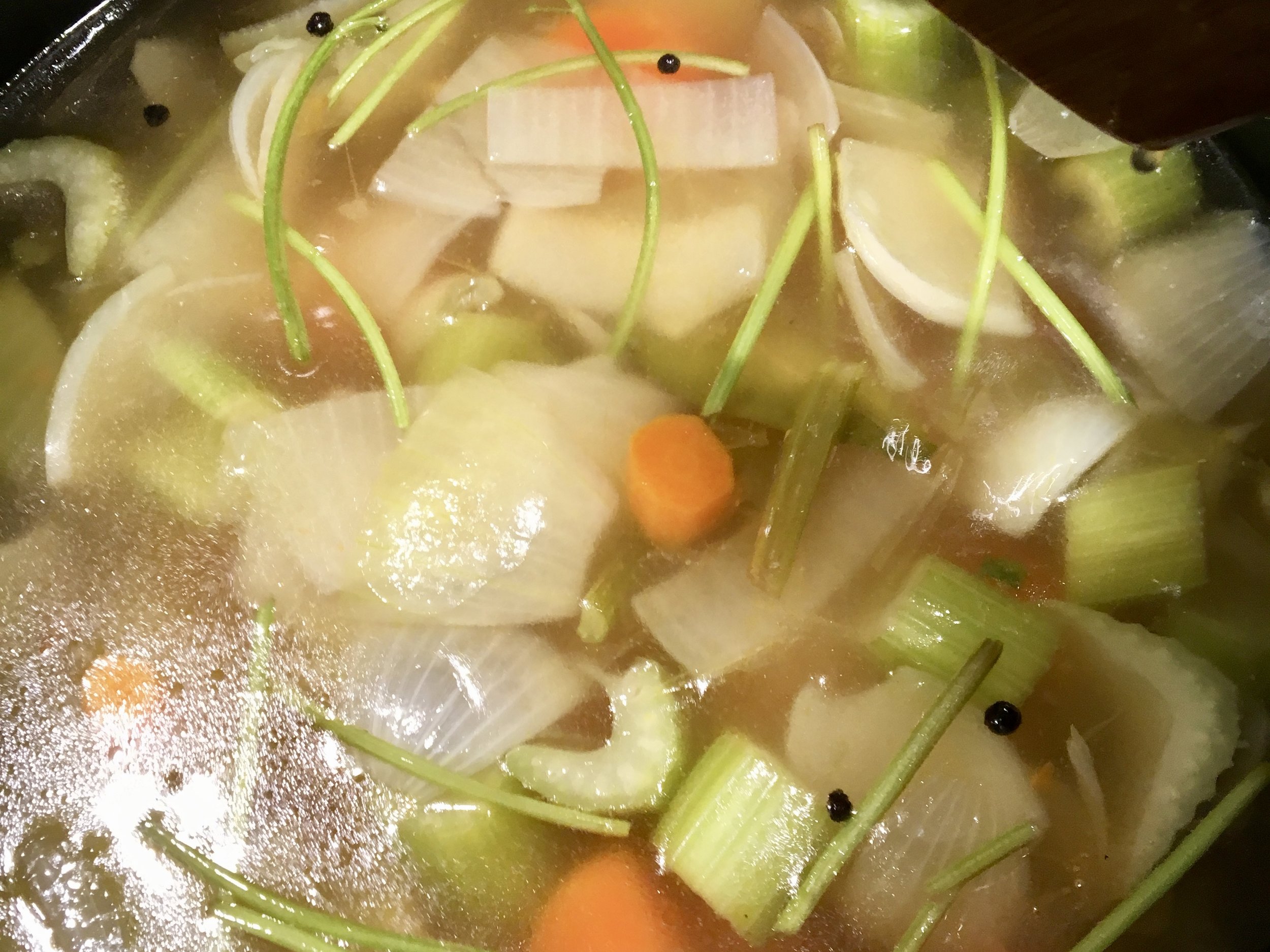
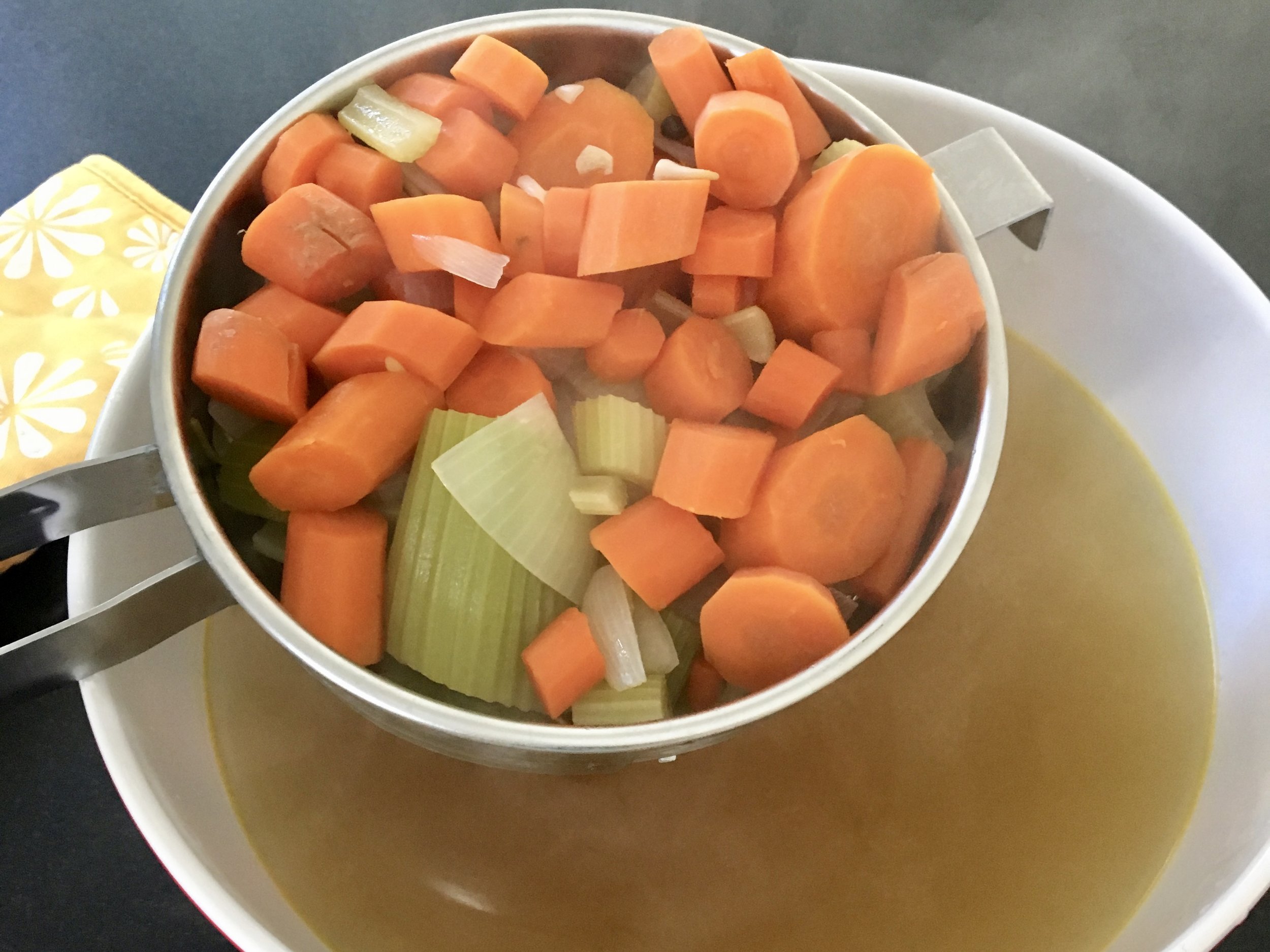

What you do:
1. Roughly chop up the peeled and cleaned vegetables. Discard any rotting or heavily blemished pieces. Basically, if you don't want that flavor impacting your finished product, don't use it.
2. Heat a small amount of oil in the large stockpot. Add the vegetables and a few pinches of salt. Sweat the vegetables on medium low heat for a few minutes. Alternatively, toss the vegetables with oil and salt, spread on a baking sheet and roast in the oven at 375 degrees until browned. You can roast animal bones in the same way.
3. If you roasted your vegetables and bones, transfer to a large stock pot. Cover the ingredients with fresh cold water. Add your bouquet garnis and vinegar, if using.
4. Bring liquid to a low simmer, and simmer uncovered for 1 hour for vegetable broth and up to 3 hours for stock using animal bones. Be careful not to boil or allow the liquid to bubble. This makes a cloudy stock.
5. Using a fine mesh strainer, strain the liquid into a large clean pot or pitcher. Sometimes I strain it multiple times to get the clearest broth possible. Discard the solids.**
6. Use right away or cool and store in the fridge for up to a week or freezer for months.
